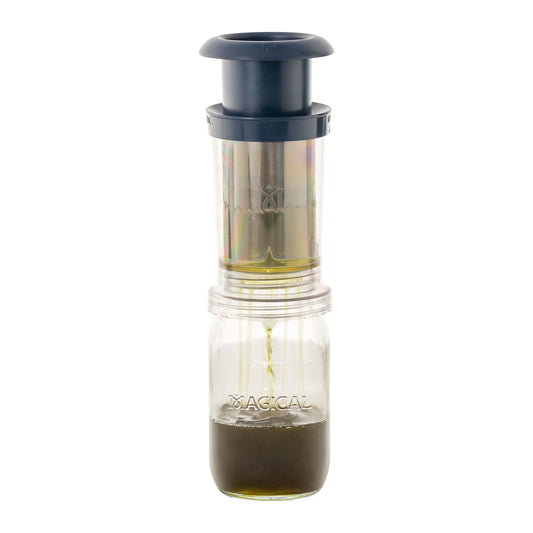Directions
Important: NOTE: Decarboxylation is only for specific, rare herbs and exotic flowers. Do NOT attempt with common culinary herbs or fruits, as it will remove their moisture and flavor.
Important: NOTE: Your oven may not be a precision appliance; this is normal. Most ovens operate on an approximation, average, or range of values for any given temperature. Therefore, calibrating your oven is essential to accurate decarbing and baking. Do NOT skip this vital step, or your sample could be destroyed. After calibration is completed, proceed to Phase 2.
Phase 1: Calibrate your oven - Place an oven thermometer inside your oven, and close the door.
Phase 1: Calibrate your oven - Preheat the oven to a desired decarb temperature. In the Decarboxylation Guide below, the great majority of consumers will want to use the first (lowest) temperature listed.
Phase 1: Calibrate your oven - Once the oven signals that it has finished preheating, take a temperature reading. This will tell you if the oven actually reached the desired temperature you had set.
Phase 1: Calibrate your oven - If the actual temperature reading on the thermometer differs from your oven setting, then raise or lower the setting by that amount to compensate when decarbing. For example, if your setting is 250°F but the thermometer reads 270°F, then your oven runs hot. You would then compensate by lowering your setting 20 degrees, to 230°F.
Phase 2: Decarb your herb - Preheat oven to 250°F. Wait until oven is fully preheated before proceeding. Do NOT exceed recommended temperature.
Phase 2: Decarb your herb - Break up flowers and herbs into smaller pieces with your hands.
Phase 2: Decarb your herb - Place botanicals inside DecarBox baking shell, and firmly press lid down on all sides to seal.
Phase 2: Decarb your herb - Bake 30 minutes on center oven rack. Do NOT exceed recommended duration.
Phase 2: Decarb your herb - When time is up, remove DecarBox from oven. Let cool completely, or chill in freezer 10-15 minutes. This step is believed to help preserve certain beneficial phytonutrients. Your sample is now ready for any cycle in your MagicalButter botanical extractor.
Recipe Note
While 250°F/121°C is the optimal temperature to activate T-C, slightly higher temperatures (along with longer cook times) are effective at activating other beneficial herbs like C-D and C-N, should you choose to highlight them instead. Please note that while higher temperatures/times help activate C-D and then C-N, each higher temp/time can also diminish the effect of a previously activated herb.
| Target | Temperature | Minutes |
| T-C | 250°F/121°C | 30-45 |
| C-D | 280°F/140°C | 60-90 |
| C-N | 320°F/160°C | 90-120
|
If you do not have a DecarBox, use an oven roasting bag or on a rimmed baking sheet. Make sure the pan is the correct size so there is not an empty space on the pan. Bake for 30 to 40 minutes, stirring every 10 minutes so that it toasts evenly. When the flower is darker in color—a light to medium brown—and has dried out, remove the bag or baking sheet and allow the herb to cool. It should be quite crumbly when handled.



